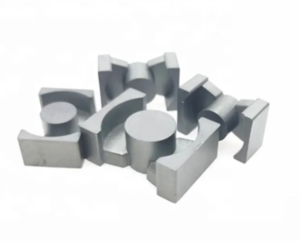
Introduction
Overview of transformer core materials
Transformer core materials are fundamental components in the construction of transformers, serving as the foundation for efficient energy conversion. These materials play a crucial role in determining the transformer’s performance, reliability, and overall efficiency. Understanding the properties, selection criteria, and applications of transformer core materials is essential for engineers and designers involved in transformer design and manufacturing.
Importance of understanding properties, selection, and applications
The importance of understanding transformer core materials lies in their significant impact on the transformer’s functionality and performance. Properties such as magnetic permeability, electrical conductivity, and mechanical strength influence the core’s ability to efficiently transfer energy and withstand operational stresses. Additionally, selecting the appropriate core material based on specific application requirements ensures optimal transformer performance and longevity. Therefore, gaining insight into transformer core materials is vital for achieving desired performance characteristics and meeting industry standards and regulations.
Magnetic properties
The magnetic properties of transformer core materials play a crucial role in the performance and efficiency of transformers. Key characteristics include:
Permeability: Permeability measures the material’s ability to become magnetized in response to an applied magnetic field. High permeability materials facilitate efficient magnetic flux paths, enhancing transformer performance.
Coercivity: Coercivity represents the material’s resistance to demagnetization. Lower coercivity ensures minimal energy loss and improved magnetic stability during operation.
Hysteresis Losses: Hysteresis losses occur due to the repeated magnetization and demagnetization cycles during transformer operation. Materials with low hysteresis losses reduce energy dissipation and increase overall efficiency.
Understanding these magnetic properties helps in selecting the most suitable core material for specific transformer applications, ensuring optimal performance and energy efficiency.
Electrical properties
The electrical properties of transformer core materials are essential factors in determining the performance and reliability of transformers. These properties include:
Resistivity: Resistivity refers to the material’s ability to resist the flow of electrical current. Low resistivity materials minimize energy losses and heat generation within the transformer core.
Conductivity: Conductivity measures the material’s ability to conduct electrical current. High conductivity materials facilitate efficient energy transfer within the transformer, reducing resistive losses.
Insulation Properties: Insulation properties are critical for preventing electrical breakdown and ensuring the safety and reliability of the transformer. Effective insulation materials have high dielectric strength and thermal stability.
By considering these electrical properties, engineers can select transformer core materials that meet the specific requirements of the application, optimizing electrical performance and minimizing energy losses.
Mechanical properties
The mechanical properties of transformer core materials play a crucial role in ensuring the structural integrity and longevity of transformers. These properties include:
Tensile Strength: Tensile strength measures the material’s ability to resist pulling forces without breaking. High tensile strength is essential for withstanding mechanical stresses, such as those encountered during transformer assembly and operation.
Hardness: Hardness indicates the material’s resistance to deformation and surface wear. A higher hardness value typically results in better resistance to abrasion and indentation, contributing to the durability of transformer cores.
Flexibility: Flexibility refers to the material’s ability to bend or deform without fracturing. Core materials with adequate flexibility can withstand mechanical vibrations and thermal expansion without experiencing structural failure.
By considering these mechanical properties, engineers can select transformer core materials that can withstand the mechanical stresses encountered during manufacturing, transportation, and operation, ensuring the reliability and longevity of the transformer.
Selection Criteria for Transformer Core Materials
Factors influencing material selection
Various factors impact material selection, including magnetic properties, electrical conductivity, mechanical strength, and cost.These factors guide engineers in choosing the most suitable material for transformer cores based on specific performance requirements.
Considerations for specific applications
Different applications have unique requirements, such as power distribution, electronics, and telecommunications.Engineers must consider these specific needs when selecting transformer core materials to ensure optimal performance and efficiency.
Comparison of different materials
Comparing materials like silicon steel, amorphous metal, and ferrite helps in understanding their properties and suitability.This comparative analysis assists engineers in making informed decisions regarding material selection for various transformer applications.
Applications of Transformer Core Materials
Power Transformers
Core materials are extensively used in power transformers, which are crucial for transmitting and distributing electrical power in utility grids. These transformers typically require core materials with high magnetic permeability and low core losses to minimize energy losses during power transmission.
Distribution Transformers
In distribution transformers, which step down the voltage for local distribution, core materials with optimal magnetic properties and low hysteresis losses are essential for efficient energy transfer and reduced heat generation. These transformers are commonly employed in residential, commercial, and industrial settings.
Specialty Applications
Materials also find applications in specialized transformers designed for specific purposes, such as instrument transformers, pulse transformers, and audio transformers. These applications often require core materials tailored to meet specific performance requirements, such as high-frequency operation or minimal distortion.
Future Trends and Innovations
Emerging materials and technologies
In the realm of future trends and innovations, we explore the horizon of emerging materials and technologies that hold promise for transformer core applications. This includes advancements in material science and engineering, such as the development of novel magnetic alloys, nanomaterials, and composite materials tailored for enhanced performance and efficiency in transformer cores.
Potential advancements
Moreover, we delve into the potential advancements anticipated in core materials, which may encompass improvements in magnetic properties, electrical conductivity, and mechanical strength. These advancements could revolutionize transformer design and manufacturing processes, leading to more compact, efficient, and reliable transformers capable of meeting the evolving demands of modern power systems.
By staying abreast of these future trends and innovations, we can anticipate and prepare for the transformative changes shaping the landscape of core materials, ensuring that we remain at the forefront of technological advancements and continue to deliver cutting-edge solutions to meet the needs of our customers and industries.